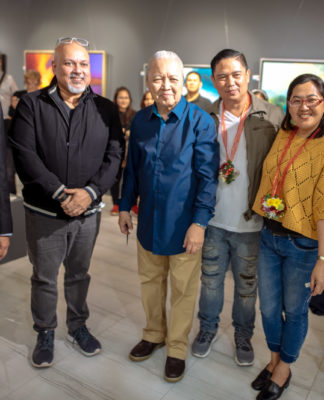GONE are the days when people need to rely on hunches to differentiate objects we are dumbfounded with. Let the sensors do the guessing game for you.
A sensor is a detecting device that receives physical input stimulus such as heat or sound. Basically, detection works through exposing the substance to be analyzed to the sensors and processing the output with the help of a computer. Sensors have already gained the interest of different countries such as France, United Kingdom, Japan, and Germany because of their improved ability to detect specific materials such as ions or chemicals, depending on the sensors’ use.
One of the leading conventions on sensors is the Asia Sense international conference on sensors. Asia Sense 2007 was held at the Thomas Aquinas Research Complex last June 5-7 with the theme, “New Domains in Chemical, Biological, and Physical Sensing.”
The conference featured studies on sensors conducted and attended by professionals from different institutions in different countries. Seven plenary lectures, 13 keynote lectures, 31 paper presentations, and 22 poster papers were showcased in the convention.
The topics discussed in the three-day conference included the possible bases in assembling sensors, such as nanomaterials, quartz, and aptamers, short sequences of nucleotides that bind with high affinity and specificity. Probable applications of chemical, biological, and physical sensing were also dealt with.
Sensing trouble
One of the highlights of the first day of the conference featured Prof. Krishna Persaud, from the University of Manchester in the United Kingdom. Persaud tackled detecting infections using sets of gas sensing systems.
According to Persaud, existing methods in detecting infections, such as surface swabbing or biopsies are superficial, time-consuming, and inconvenient. Thus, his team of researchers devised a fast, reliable, and non-invasive means of determining if individual infectious agents in wounds are present or not, by using an electronic nose (e-nose), a sensor capable of recognizing simple or complex odors of various substances.
The study made use of Pseudomonas aeruginosa, Streptococcus pyogenes, and Staphylococcus aureus, the three species of bacteria attributed to urinary tract infections, impetigo, and pneumonia, respectively. Volatile substances that uniquely occur among the bacteria are determined and used to set up a group of gas and odor sensors, which will be used to discriminate them.
Meanwhile, Nina Korlina Madzhi of Mara University of Technology in Malaysia presented her paper titled, “Modeling of Piezoresistive Microcantilever as a Pressure Sensor for Human Stress Measurement.”
According to Madzhi, since any type of stress afflicted to the body can cause a disorder, there is a need to monitor it over extended periods of time.
“A non-invasive measurement of biological information such the amount of amylase found in saliva is very useful in order to estimate human stress,” Madzhi said.
The study involved the modeling of a piezoresistive microcantilever. Piezoresistive microcantilever measures the amount of amylase that accumulates on its surface through detecting changes in the tension caused by its accumulation.
Taste test
Assoc. Prof. Manuel del Valle of the Autonomous University of Barcelona in Spain, conducted a lecture on the electronic tongue (e-tongue) as a new trend in electrochemical sensors. The e-tongue, which makes use of groups of sensors with reduced selectivity, can be used to differentiate substances from each other, or to determine the presence of a substance in interfering factors. An example is how it can be able to differentiate types of bottled water, such as sparkling water, mineral water, and sparkling mineral water.
In his lecture, del Valle illustrated some practical applications of the e-tongue like predicting properties of fruit juices and determining ammonium pollutants in surface waters. Del Valle said that the sensors can be used in industries, such as food and pharmaceutics, where alternatives to the human expert are in demand.
The Thomasian sense
According to Dr. Fortunato Sevilla III, chair of the Asia Sense 2007, the Philippines, most especially the University, was chosen to host this year’s Asia Sense upon recognition of the numerous work on sensors being conducted by Thomasians.
“It is an accepted fact that UST is the pioneer in sensors work here in the Philippines,” Sevilla said.
Some studies by Thomasian students presented in the conference were “Nanostructures and Molecular Assembly of ?-Blocked Long Oligothiophene 96-Mer as Probed by In Situ Electrochemical Scanning Tunneling Microscopy: Potential Candidate for Polymer-Based Sensor Device,” presented by Bernard John Tongol of the College of Science and “Fabrication and Evaluation of Gold-Poly(3,4-ethylenedioxythiophene) – Gold Segmented Nanosensors,” presented by Christina Binag. Both are done in collaboration with institutions from Japan and the US, respectively.
According to Sevilla, in holding Asia Sense 2007 in the Philippines, increased linkages may be fostered with other countries that can lead to collaborative studies with scientists abroad. This can lead to the further advancement of the field of sensors through the possible discovery of new bases and improvements in the making of sensors.
















